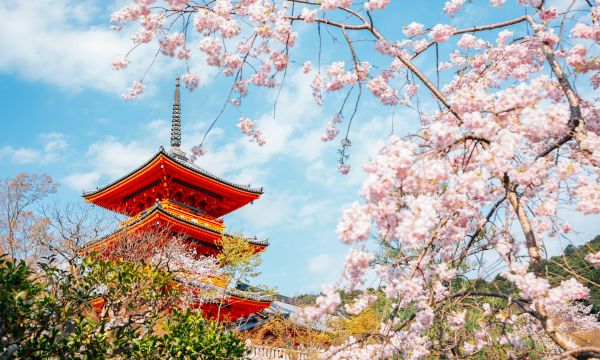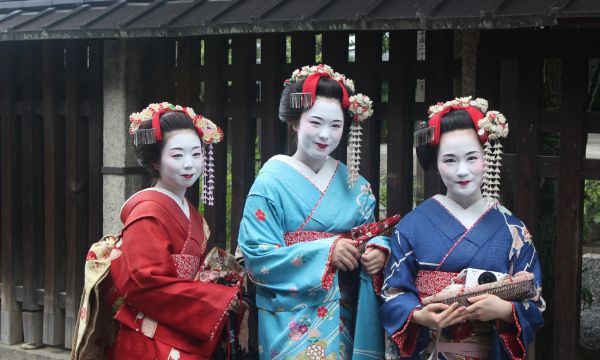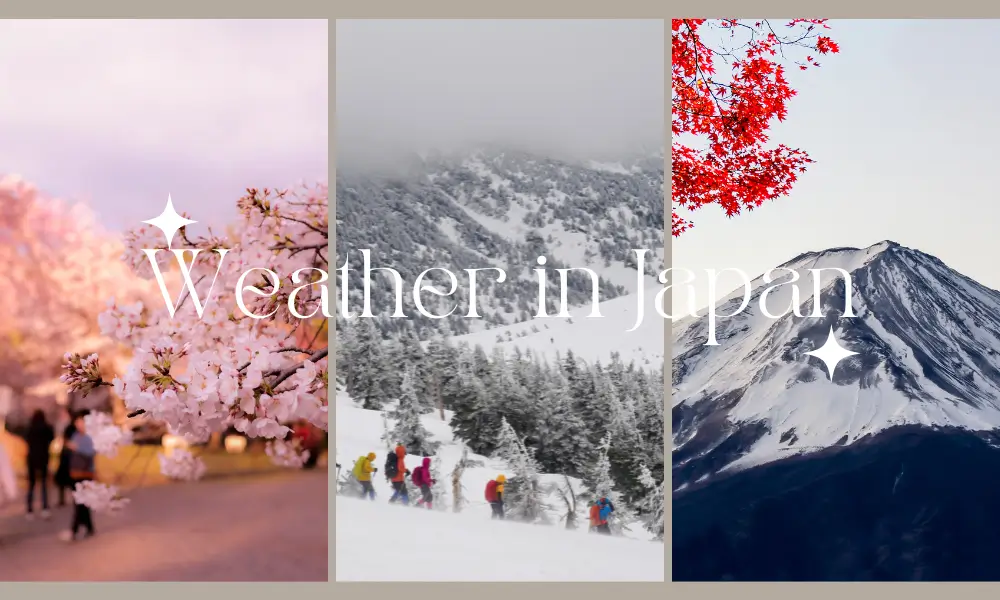Last updated on November 29th, 2024 at 04:25 pm
The best time to visit India is between December and March. The weather begins to heat up in April, with most places experiencing a summer from June to September. That being said, India is a wonderful country with amazing climatic regions, and no matter the weather, there are always places to explore throughout the year.
During peak season in India, cities come alive with bustling crowds and vibrant festivals that showcase the country’s rich culture. Visitors immerse themselves in a sensory overload of sights, sounds, and smells, from colourful Holi celebrations to lively Diwali festivities. The energy and excitement of these events are infectious, drawing tourists from around the world to experience the unique traditions and customs of India.
India is overflowing with shoppers and street vendors selling exotic foods; you have the opportunity to explore authentic Indian cuisine and handicrafts. Despite the large crowds, there is a tendency among people to come together to celebrate special occasions and cultural heritage.
India’s shoulder season is between June and November. So, it’s the best time to visit India to enjoy the Himalayas. Goa’s beach resort becomes empty during this time, but those who love mountains, camping, and yoga visit Ladakh to enjoy its lodges, tented camps, and yoga retreats.
Show the relevant content
ToggleIndia’s Seasons Unveiled
Winter (November to February)
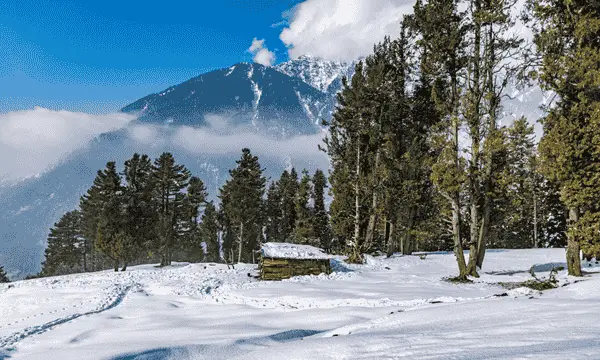
Winter in India is known for its pleasant, cool weather, which is ideal for sightseeing and cultural exploration. The crisp air transforms cities into vibrant hubs, inviting travellers to explore historical landmarks without exerting themselves. From the iconic Taj Mahal in Agra to the serene backwaters of Kerala, winter is perfect for exploring India’s rich heritage.
In the bustling cities of Delhi and Jaipur, winter offers a respite from the usual heat, making it the prime time for tourists. The chilly breeze adds a touch of romance to the already magnificent landscapes, making it the ideal time for outdoor activities, like evening strolls through bustling markets and peaceful walks in lush gardens.
Also Read: The best things to do in Delhi
Summer (March to June)
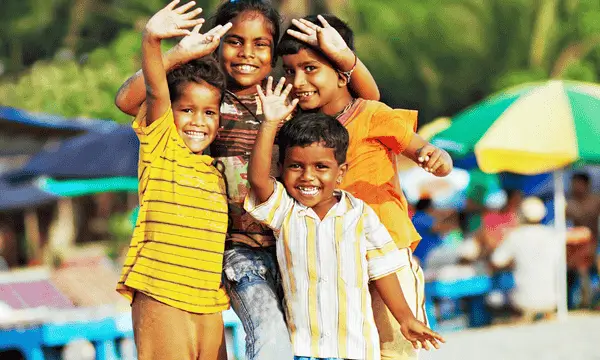
Summer in India can be intense, with temperatures soaring in many regions. However, this season is best time to visit India for those seeking solace in India’s beautiful hill stations and Himalayan treks. The cool mountain air offers a refreshing escape from the heat, attracting travellers to destinations like Shimla, Manali, and Darjeeling.
The mountains bloom with vibrant flowers, and the landscape transforms into a picturesque haven. Summer is ideal for adventure seekers aiming to conquer Himalayan treks or relax in the lap of nature, enjoying breathtaking views and local delicacies.
Monsoon (July to October)

The monsoon brings life to India’s landscapes, painting them in lush green hues. While the rains may deter some travellers, it’s the perfect time for nature enthusiasts and those seeking off-season travel deals. The refreshing showers rejuvenate the earth, and waterfalls gush with newfound vigour, creating spectacles worth witnessing.
For budget travellers, the monsoon season offers excellent opportunities to explore India without the usual crowds. Deals on accommodations and attractions make it an attractive option for those wanting to experience India’s beauty while saving money.
Transition Months (October and March)
The transition months of October and March offer comfortable weather for most destinations in India. These months serve as a bridge between the extremes of summer, monsoon, and winter, providing a delightful balance for tourists.
During these times, the weather is mild, and nature is at its best. It’s an excellent period to explore the entire country, from the deserts of Rajasthan to the beaches of Goa, without worrying about extreme weather conditions.
Regional Delights Throughout the Year
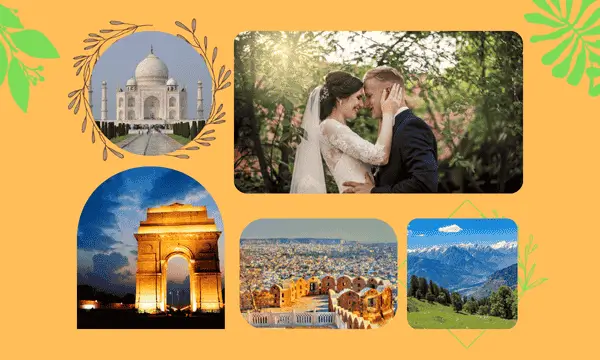
Northern India (Delhi, Rajasthan, Agra, and Himalayas)
Winter is the best time to visit India to explore Northern India’s cultural sites and cities. The cooler temperatures make visiting historical landmarks, such as the Red Fort and Jaipur’s Amber Fort, more enjoyable. The absence of scorching heat allows travellers to immerse themselves in the rich history and architecture of the region.
For those craving a mountain escape, summer is the perfect season to head to the hill stations of Shimla and Manali. The pleasant weather makes trekking through the majestic Himalayas an unforgettable adventure.
Southern India (Kerala, Tamil Nadu, Karnataka)
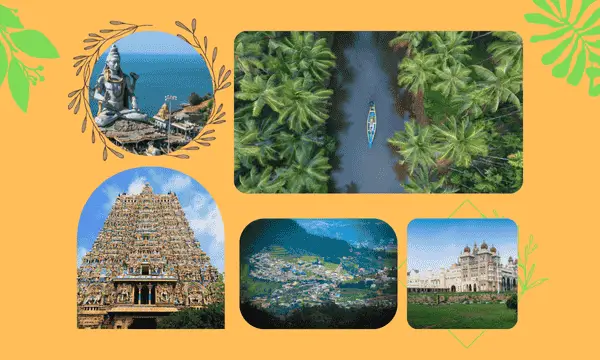
Southern India welcomes visitors during the winter months, offering comfortable weather for exploring backwaters, beaches, and cultural tours. The tranquil backwaters of Kerala provide a unique experience, while Tamil Nadu and Karnataka boast magnificent temples and vibrant festivals.
The monsoon season transforms the region into a lush paradise, attracting Ayurvedic treatment seekers and nature lovers. The rejuvenating rains enhance the beauty of the Western Ghats and offer a refreshing change from the usual tourist routes.
Eastern India (West Bengal, Sikkim, Assam)
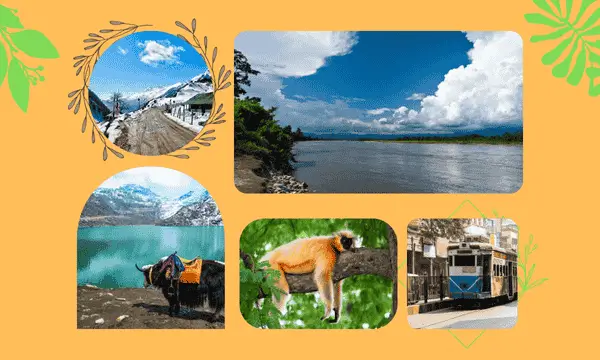
Spring and autumn are the best time to visit India to visit Eastern India, especially during the Durga Puja festival. The pleasant weather complements the festive atmosphere, allowing travellers to participate in cultural celebrations.
Sikkim and Assam, with their stunning landscapes and diverse cultures, welcome guests with open arms during these seasons. From tea gardens to vibrant bazaars, the region offers a unique blend of experiences.
Western India (Goa, Gujarat, Maharashtra)
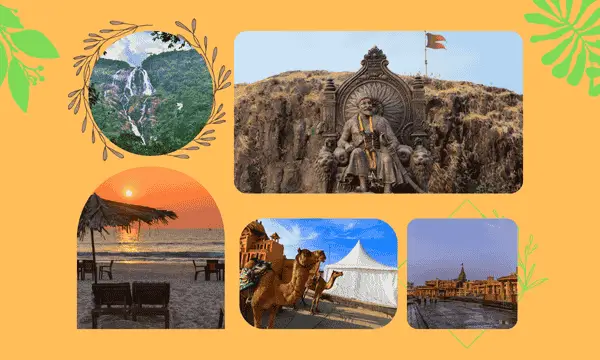
Winter is the prime season for Western India, where the beaches of Goa and the desert landscapes of Gujarat beckon travellers. The pleasant temperatures allow for leisurely exploration of vibrant markets and sunken shores.
The state of Maharashtra boasts cultural diversity and historical significance, making it an ideal destination for those seeking both relaxation and adventure.
Northeast India (Meghalaya, Nagaland, Arunachal Pradesh)
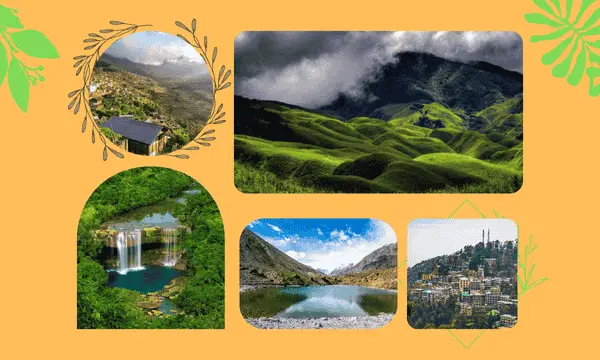
Spring and summer bring blooming flowers and vibrant festivals to Northeast India, offering visitors a unique cultural experience. Explore the hidden gem of Northeast India’s pristine landscapes and welcoming people.
Travellers can immerse themselves in the natural beauty of Meghalaya’s living root bridges or participate in Nagaland’s Hornbill Festival, celebrating Indigenous traditions.
Central India (Madhya Pradesh, Chhattisgarh)
Winter is the best time to explore Central India’s wildlife safaris and heritage sites. The region is home to national parks, such as Kanha and Bandhavgarh, where visitors can spot majestic tigers and diverse wildlife.
The cooler weather allows for a leisurely exploration of ancient temples and historical forts, offering a glimpse into India’s rich past.
Festivals and events throughout the season
India is renowned for its vibrant festivals, and each season brings its own unique celebrations.
During winter, festivals like Diwali and Christmas light up the country with joy and warmth. The Pushkar Camel Fair in Rajasthan draws travellers eager to experience the colourful festivities and cultural traditions.
Summer brings spiritual celebrations like Buddha Purnima and the Hemis Festival, offering travellers a chance to witness age-old rituals and connect with the local culture.
Festivals like Onam, Janmashtami, and Teej mark the monsoon season, offering a glimpse into India’s diverse cultural tapestry. These festivals add a lively dimension to your travel experience, allowing you to immerse yourself in India’s traditions and customs.
Seasonal Activities to Enhance Your Journey
Winter Activities
Winter is perfect for sightseeing in cities like Jaipur, Delhi, and Agra. The pleasant weather allows for a leisurely exploration of historical landmarks and bustling markets.
For adventure seekers, trekking in the snow-covered Himalayan regions offers a thrilling experience. The crisp mountain air and breathtaking views make it an unforgettable adventure.
Summer Activities
Summer invites travellers to explore hill stations like Darjeeling, Ooty, and Munnar. The cool mountain breeze and panoramic vistas provide a welcome escape from the heat.
Wildlife enthusiasts can enjoy safaris in reserves like Jim Corbett and Bandhavgarh, where they can witness India’s diverse fauna.
Monsoon Activities
Monsoon season is perfect for exploring waterfalls in Karnataka and Maharashtra. The gushing waterfalls create a spectacle that captivates nature lovers.
Eco-tourism in Kerala and the Western Ghats offers a chance to connect with nature and explore lush rainforests teeming with biodiversity.
Tips for a seamless journey
Planning a trip to India requires careful consideration of the weather and activities. Here are some tips to ensure a smooth and enjoyable experience:
When packing for your trip, consider the season and destination. Lightweight, breathable clothing is ideal for summer, while layers are essential for winter travel. Don’t forget essentials like sunscreen, insect repellent, and a sturdy pair of walking shoes.
Booking in advance is crucial, especially during peak travel seasons. Secure accommodations and transportation early to avoid any last-minute hassles.
If you’re visiting during the monsoon, pack a reliable raincoat and waterproof gear. Be prepared for sudden downpours and potential travel delays, but don’t let the rain deter you from exploring India’s beauty.
Month-by-month guides for travelling in India
Visiting India in January
It’s one of India’s driest months. The North is cold, but crossing the Himalayas and exploring Tibet’s spirituality in Dharamsala is best. For warm weather, you can visit Goa or take a cruise throughout Kerala.
Visiting India in February
This is one of the best months to visit the entire country, especially Rajasthan’s desserts and culture, due to its warm and sunny weather. Hotels are booked so early. Therefore, it is essential to plan your trip in advance.
Visiting India in March
March is a wonderful time to tick off the Taj Mahal and Amber Fort in the Golden Triangle. The biggest reason to travel to India in March is none other than the Holi festival. Thousands of people throw colourful powders over each other in the name of love. Even though the date changes in the Hindu calendar, it happens in March.
Visiting India in April
In the month of April, the hot and sticky weather starts. It’s a wonderful month to spot wildlife in Ranthambhore National Park. And if you are lucky, you can see the Royal Bengal Tiger. Also, it is a wonderful time to hike in the Himalayas, which are blooming with wildflowers at this time.
Visiting India in May
The month of May is the hottest in India. Unless you know how to handle heat, it may be too hot. You can climb in the mountains where a cooler climate and colourful blooms await, or go to Darjeeling for cool breezes and delicious tea. Hotels offer excellent value during May, but we do warn you of the very high temperatures (more than 42°C) and the humidity, which can be very uncomfortable.
Visiting India in June
High levels of humidity accompany the start of the rainy season in June. Travelling in south India is the best choice, and you can go north to swap beaches and backwaters for mountains, rivers, and yoga classes.
Visiting India in July
You can enjoy the idle weather and beautiful views of Ladakh in the months of July and August. Additionally, people throughout India are eagerly anticipating the arrival of the upcoming rains.
Visiting India in August
The months of August and September are the best for cruising along the Ganges between the holy cities of Varanasi and Patna. Don’t miss the annual snake boat race in Kerala in the backwater, as well as festivities for Independence Day and Ganesh Chaturthi.
Visiting India in September
The Golden Triangle is the best time to explore because it’s not crowded in September. Also, a better time to visit Rajasthan is this month. India also refers to it as the harvest season, allowing you to savour the finest of Indian cuisine.
Visiting India in October
In India, October marks the beginning of the travel season. Between October and November, people celebrate their biggest festival, Diwali. We can see homes and streets decorated with lights and fireworks everywhere.
Visiting India in November
November is one of the best months to travel anywhere in India. November offers wonderful weather and multiple festivals. The Pushkar Camel Fair in Rajasthan is the biggest festival here. Thousands of camels and their owners come to participate in the Pushkar fair for their pride every year.
Visiting India in December
In December, the weather is cooler in the North. Morning and evening time will be foggy and cold, but daytime will be normal. It’s warm, sunny, and beautiful in southern India. It will be amazing to celebrate Christmas here. Flights and hotels are jam-packed this time. Therefore, you must plan ahead if you want to travel.
Frequently Asked Questions
When is the best overall time to visit India?
The best time to visit India depends on your preferences and the regions you wish to explore. Generally, winter (November to February) offers pleasant weather for most destinations, making it a popular choice for tourists.
What’s the cheapest season to travel to India?
Monsoon season (July to October) is considered the off-peak travel period, offering budget-friendly deals on accommodations and attractions. While some areas experience heavy rainfall, it’s an excellent time for budget travellers seeking unique experiences.
Is the monsoon a suitable time to visit India?
The monsoon season provides lush landscapes and fewer crowds, making it an attractive option for nature enthusiasts. However, heavy rains can occasionally disrupt travel.
Which regions should I avoid during extreme heat?
During the summer months (March to June), regions like Rajasthan and parts of Northern India experience scorching temperatures. Travelers may opt for cooler destinations like hill stations or the Himalayan region to escape the heat.
What are the must-visit places during winter in India?
Winter is ideal for exploring historical and cultural sites in cities like Jaipur, Delhi, and Agra. Travellers can also venture into the snow-covered Himalayan regions for trekking adventures.
Which month is best to fly to India?
October and November are considered ideal months for flying to India, as the weather is comfortable and several festivals take place during this period.
Which months have the best weather in India?
October to March generally offers the best weather for travel in India, with mild temperatures and minimal rainfall.
Conclusion
India’s diverse climate and geography create a tapestry of experiences for travellers year-round. From the snow-capped peaks of the Himalayas to the sun-kissed beaches of Goa, India’s beauty is boundless.
By aligning your travel preferences with the country’s seasonal offerings, you can ensure a memorable and enriching adventure. Whether you’re a culture enthusiast, nature lover, or adventure seeker, India beckons with open arms.
Plan your Indian getaway today and immerse yourself in the vibrant culture, rich heritage, and breathtaking landscapes that await.

